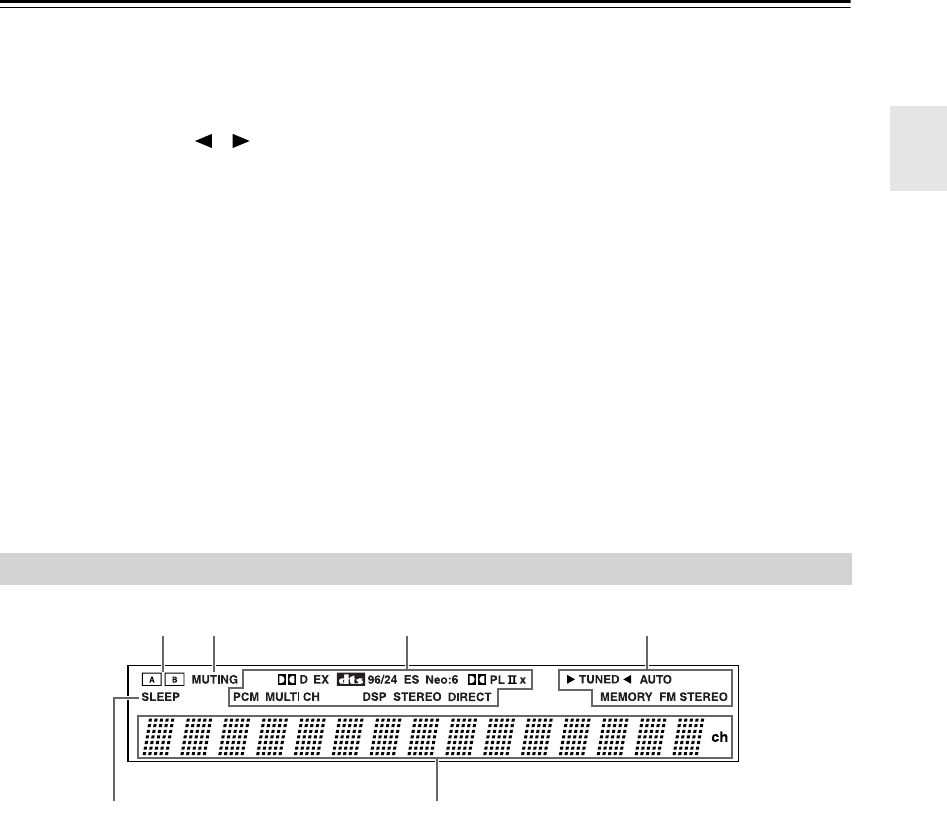
9
Getting to Know the AV Receiver
—Continued
J
TONE, [–], and [+] buttons (41)
Used to adjust the bass and treble.
K
STEREO button (43)
Selects the Stereo listening mode.
L
LISTENING MODE [ ]/[ ] buttons (43)
Select the listening modes.
M
DISPLAY button (38)
Displays various information about the currently
selected input source.
N
DIGITAL INPUT button (33, 52)
Used to assign the digital inputs and to specify the
format of digital input signals.
O
DIMMER button (41)
Adjusts the display brightness.
P
MEMORY button (40)
Used when storing or deleting radio presets.
Q
TUNING MODE button (39)
Selects the Auto or Manual tuning mode for AM
and FM radio.
R
RETURN button
Selects the previously displayed setup menu.
S
SETUP button
Used to access the setup menus.
T
VIDEO 3 INPUT (26, 49)
Used to connect a camcorder, games console, and so
on. There are jacks for composite video and analog
audio.
U
PURE AUDIO button and indicator (43)
The North American model doesn’t have this button
and indicator.
Selects the Pure Audio listening mode. The indica-
tor lights up when this mode is selected.
For detailed information, see the pages in parentheses.
1
A and B speaker indicators (6, 37)
Indicator A lights up when speaker set A is on. Indi-
cator B lights up when speaker set B is on.
2
MUTING indicator (41)
Flashes while the AV receiver is muted.
3
Listening mode and format indicators (45)
Show the selected listening mode and the format of
digital audio signals.
4
Radio indicators
TUNED (39):
Lights up when tuned to a radio sta-
tion.
AUTO (39):
For AM and FM radio, lights up when
Auto Tuning is selected, and disappears when Man-
ual Tuning mode is selected.
MEMORY (40):
Lights up when presetting radio
stations.
FM STEREO (39):
Lights up when tuned to a ste-
reo FM station.
5
SLEEP indicator (42)
Lights up when the Sleep function has been set.
6
Message area
Displays various information about the selected
input source.
Display
2134
5
6


















